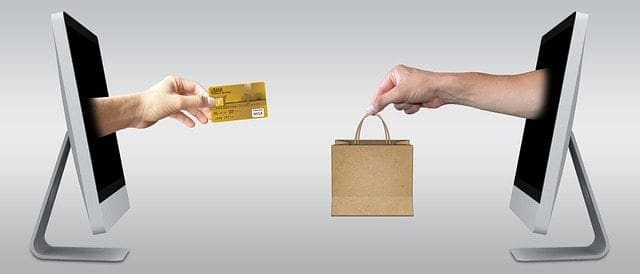The Internet has changed the way we work, the way we socialise, the way we interact and the explosion of e-commerce business has changed the way we shop. Over the past decade, the progression of both tech devices (mobiles, tablets etc.) and the Internet has had a direct correlation with the e-commerce evolution.
Just as the Internet has grown into the desired medium for marketing and advertising, the e-commerce evolution has seen online shopping rival brick and mortar shops.
Some of the biggest changes in e-commerce over the last decade include:
- The rise of online marketplaces.
- The shift from desktops to mobile.
- The tremendous growth of digital marketing and advertising.
- Augmented Reality and Virtual Reality
Online Marketplaces
In the past ten years, online marketplaces such as Amazon and eBay have become very popular. Although many retailers now have an online presence, it’s a different shopping experience to that of an online marketplace. By accessing an online marketplace, consumers can find a range of product offerings that fit their search. They can compare prices, brands, read customer reviews, and often purchase products for prices below retail.
Mobile-Friendly Shopping
Potentially one of the biggest elements of the e-commerce evolution is mobile shopping or m-commerce. The ability to browse, compare, and shop using responsive mobile sites or apps via a smartphone or tablet. People no longer have to wait until they’re home to use their desktop computer, let alone venture out to a brick and mortar store to make a purchase. Mobile commerce has made way for better engagement with consumers. Push notifications are an advantage that mobile shopping apps have in re-engaging their customers and promoting sales. Desktop e-commerce platforms don’t have this luxury outside of email newsletters.
Contact Us
Online and Digital Marketing
The evolution of m-commerce has also hugely changed the way we market to consumers. Most individuals, particularly the younger demographic, will have their mobile on them at all times. This makes the consumer much more accessible to marketers and advertisers. Online and digital marketing campaigns have now completely replaced previous methods of marketing to consumers. We can now also accurately target where our audience hangs out and spends most of their time, such as:
- Social Media
- Online games
- Apps
- Websites
- Blogs
As e-commerce has evolved, online marketing has become seemingly limitless in its potential to reach and persuade consumers throughout their online behaviour.
The Future of E-Commerce Business
Augmented Reality and Virtual Reality
“With the increasing shift in mobile commerce, it’s only a natural progression to incorporate augmented reality into experiences that shoppers have on their mobile devices during their path-to-purchase.” – Jeff Papows, CEO ShopAdvisor
Augmented reality and virtual reality are already making waves but 2018 will see this really gather speed. Augmented reality makes it possible to layer digital enhancements over the top of an existing reality to make it even more meaningful and interactive. Introducing AR into e-commerce completely revolutionises a consumer experience. For example, if a customer is shopping online for furniture, they can select furniture pieces they would like to consider, and then see how those items will look in their very own home. The AR app uses the mobile camera to capture any room, to scale, and then enables a customer to see their potential purchase in front of them before making the decision to buy.
If you would like help planning your e-commerce business strategies, call Mike, one of our company Directors and Marketing experts on 0207 856 0418 or email her at info@aiminternet.co.uk.
If you enjoyed this, you may also like our previous blog, E-commerce Websites | The Benefits.

